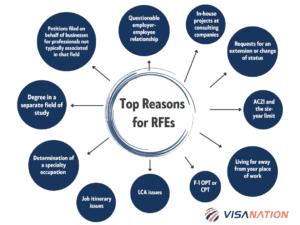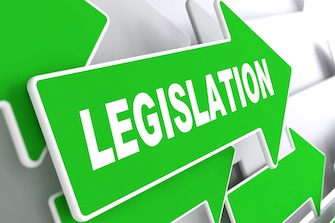“For Use Under” Patent Marking: When a Claim Only Partially Covers the Product | Holland & Knight LLP
The Patent Act requires patentees to mark their products with the numbers of any patents that cover that product. Put differently, if you produce a product that would infringe one of your patents, you must mark that product with the patent number. But what should a patent owner do if their product covers only a portion of a patented claim? Because software often covers only a portion of a patented claim, this article examines the patent marking requirement in that context and recommends best practices.
The Patent Marking Requirement
The Patent Act requires that patentees put the world on notice that their products are covered by a given patent:
Patentees, and persons making, offering for sale, or selling within the United States any patented article for or under them, or importing any patented article into the United States, may give notice to the public that the same is patented, either by fixing thereon the word “patent” or the abbreviation “pat.”, together with the number of the patent . . .
35 U.S.C. § 287(a). Although this is written with permissive language (“may give notice”), the penalty for not marking is a strict limitation on later damages:
In the event of failure so to mark, no damages shall be recovered by the patentee in any action for infringement, except on proof that the infringer was notified of the infringement and continued to infringe thereafter, in which event damages may be recovered only for infringement occurring after such notice.
35 U.S.C. § 287(a). In other words, if you fail to mark your product, then you cannot accrue damages until the moment the defendant became aware of the infringement (typically by written notice or filing a complaint). As a result, nearly every product bears a patent marking of some kind that either lists the numbers of patents that cover the product or provides a link to a website that does the same.
This marking requirement advances of the Patent Act: “to promote the progress of science and useful arts[.]” Constitution, Art. I § 8. Specifically, because every patent must “contain a written description of the invention, and of the manner and process of making and using it[,]” someone curious about how a product works can examine its marked patents. 35 U.S.C. § 112. The marking requirement also puts the public on notice that copying the product risks a patent infringement claim.
The Patent Act also prohibits marking a product when it is not warranted. Such “false marking” could lead to criminal or civil liability. 35 U.S.C. § 292.
When a Patents Only Partially Covers a Product
When a product meets all elements of a patent’s claim, then the decision to mark is an easy one. But what if a product only meets some portion of a patent’s claim, and is instead intended to be combined with other products to meet all elements of that claim? This is a common issue with software because components are often built to interface with others (e.g., a core application will interface with a database to store its data).
Consider this claim:
(Although this claim is exceedingly simple and unrealistic, the distance between the moon and the Earth is actually worth calculating because it varies over time. The moon’s orbit is elliptical, which results in an approximately 26,465-mile difference between the bodies and is moving away from Earth at a rate of 3.8 cm per year.)
If the patent owner develops and sells the claimed application, but nothing else, then there is no need to mark because that application does not meet all limitations of the claim. The patent owner, however, encourages its users to combine the application with a database and a processor so it can operate as intended.
This situation seemingly puts the patent owner in a tight spot: they want to put the world on notice of their patent to avoid any limitation of damages in the future, but they are concerned that they may be committing false marking.
Amsted and “For Use Under” Marking
In such cases, the safest strategy for patent holders is to mark their products with “For Use Under” notices. Amsted Industries Inc. v. Buckeye Steel Castings Co. is the leading “For Use Under” case. 24 F.3d 178 (1994). There, the claim at-issue included “a particular center plate in combination with several other components to form a railroad car underframe structure.” Id. at 178. Plaintiff Amsted sold this center plate component with no patent marking whatsoever, and Defendant Buckeye allegedly sold a copy of the component. Id. at 180. Amsted sued for patent infringement, and a jury awarded Amsted damages starting at the date when Amsted formally informed Buckeye of its infringement allegations. Id. In the jury’s view, this date constituted the moment when Buckeye was first notified of the patent-in-suit.
Amsted appealed, and argued that it was entitled to damages earlier than the notification date because Amsted had no need to mark its center plate product. Specifically, Amsted argued that its customers – not Amsted – used the center plate to construct what would be an infringing product.
The U.S. Court of Appeals for the Federal Circuit first interpreted the “for and under” language of the marking statute, which extends the marking obligation to a patent owner’s licensees. Id. at 185. The Court explained that the distinction was insubstantial between express licensees and implied licensees. Id. (“the purpose of section 287 [is] to encourage the patentee to give notice to the public of the patent, …, [so] there is no reason why section 287 should only apply to express licensees and not to implied licensees” (internal quotations and citation omitted)). In Amsted’s case, Amsted told its customers to use the center plate in a covered product, so those customers were implied licensees of the patent-at-issue.
The Court then concluded that Amsted had an obligation under the Patent Act to mark its center plate component, and suggested that ” ‘for use under U.S. X,XXX,XXX’ would have sufficed” to meet Amsted’s obligation. Id. In the alternative, Amsted could have required its downstream customers to mark the center plate, after integrated with the rest of the railroad car underframe structure, with the patent number. “Such marking by either Amsted or its purchasers would have fulfilled the policy goal of notifying the public concerning the patent status of items in commerce.” Id.
The lesson for patent owners is to consider the downstream intended uses of their products. If the patent owner anticipates that those products will be combined with other components, and the resulting combination would meet all elements of the patent owner’s claim, then the patent owner should 1) mark the product “for use under” the patent or 2) contractually require its customers to mark the product with the patent number.






![[Webinar] NFTs and Brands in the Metaverse – December 6th, 9:00 am – 10:00 am EST | World Law Group [Webinar] NFTs and Brands in the Metaverse – December 6th, 9:00 am – 10:00 am EST | World Law Group](https://jdsupra-html-images.s3-us-west-1.amazonaws.com/18710_1a663aba666ce99f783aa0beae43ea81.png)